Solar eclipse of July 31, 2000
A partial solar eclipse occurred on July 31, 2000. A solar eclipse occurs when the Moon passes between Earth and the Sun, thereby totally or partly obscuring the image of the Sun for a viewer on Earth. A partial solar eclipse occurs in the polar regions of the Earth when the center of the Moon's shadow misses the Earth. It was visible from northern Russia, northeastern Scandinavia, northern Greenland, western Canada, and the northwestern United States.
| Solar eclipse of July 31, 2000 | |
|---|---|
 Map | |
| Type of eclipse | |
| Nature | Partial |
| Gamma | 1.2166 |
| Magnitude | 0.6034 |
| Maximum eclipse | |
| Coordinates | 69.5°N 59.9°W |
| Times (UTC) | |
| Greatest eclipse | 2:14:08 |
| References | |
| Saros | 155 (5 of 71) |
| Catalog # (SE5000) | 9508 |
Images

Related eclipses
Eclipses of 2000
Solar eclipses 1997–2000
This eclipse is a member of a semester series. An eclipse in a semester series of solar eclipses repeats approximately every 177 days and 4 hours (a semester) at alternating nodes of the Moon's orbit.[1]
| Solar eclipse series sets from 1997–2000 | ||||||
|---|---|---|---|---|---|---|
| Descending node | Ascending node | |||||
| Saros | Map | Gamma | Saros | Map | Gamma | |
120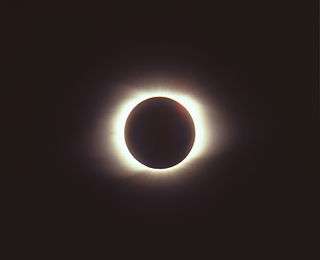 Chita, Russia | 1997 March 9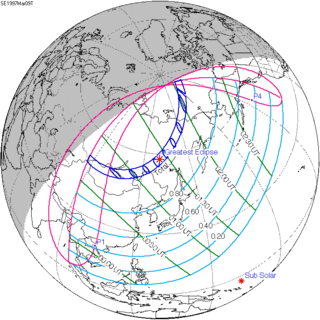 Total | 0.91830 | 125 | 1997 September 2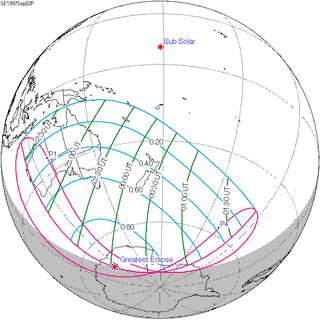 Partial | -1.03521 | |
130.jpg) Total eclipse near Guadelope | 1998 February 26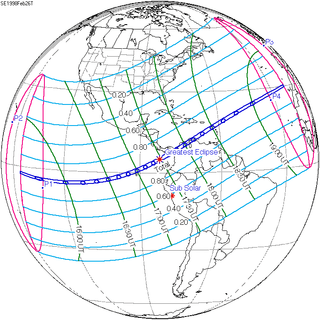 Total | 0.23909 | 135 | 1998 August 22 Annular | -0.26441 | |
| 140 | 1999 February 16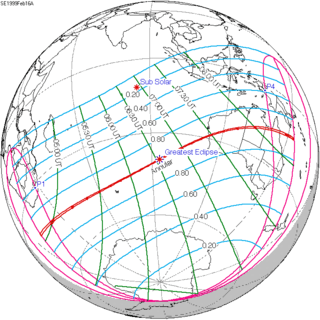 Annular | -0.47260 | 145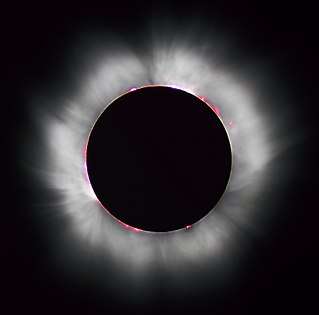 Totality from France | 1999 August 11 Total | 0.50623 | |
| 150 | 2000 February 5 Partial | -1.22325 | 155 | 2000 July 31 Partial | 1.21664 | |
| Partial solar eclipses on July 1, 2000 and December 25, 2000 occur in the next lunar year eclipse set. | ||||||
Saros 155 series
It is a part of Saros cycle 155, repeating every 18 years, 11 days (223 synodic months), contains 71 events. The series started with a partial solar eclipse on June 17, 1928. It has total eclipses from September 12, 2072 to August 30, 2649. The series also has 3 hybrid eclipses from September 10, 2667 to October 3, 2703 and 20 annular eclipses from October 13, 2721 to May 8, 3064.
The series ends at member 71 as a partial eclipse on July 24, 3190. The longest total eclipses will be on October 26, 2144 and on November 7, 2162, at 4 minutes and 5 seconds.[2]
| Series members 1–10 occur between 1901 and 2100: | ||
|---|---|---|
| 1 | 2 | 3 |
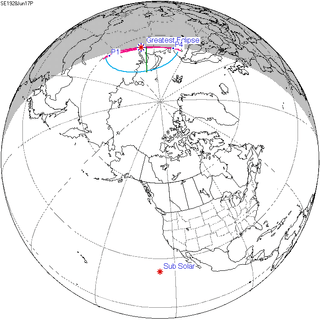 June 17, 1928 |
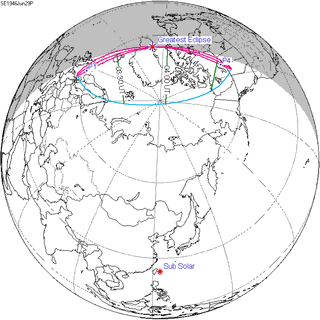 June 29, 1946 |
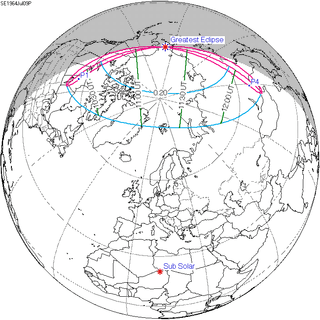 July 9, 1964 |
| 4 | 5 | 6 |
 July 20, 1982 |
 July 31, 2000 |
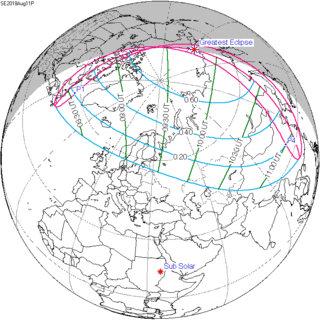 August 11, 2018 |
| 7 | 8 | 9 |
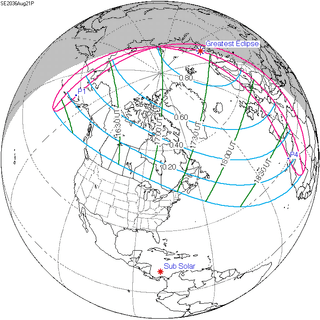 August 21, 2036 |
 September 2, 2054 |
 September 12, 2072 |
| 10 | ||
 September 23, 2090 | ||
Metonic series
The metonic series repeats eclipses every 19 years (6939.69 days), lasting about 5 cycles. Eclipses occur in nearly the same calendar date. In addition, the octon subseries repeats 1/5 of that or every 3.8 years (1387.94 days). All eclipses in this table occur at the Moon's ascending node.
| 22 eclipse events between December 24, 1916 and July 31, 2000 | ||||
|---|---|---|---|---|
| December 24–25 | October 12–13 | July 31-Aug 1 | May 18–20 | March 7–8 |
| 91 | 93 | 95 | 97 | 99 |
| December 23, 1878 | October 12, 1882 | July 31, 1886 | May 18, 1890 | March 7, 1894 |
| 101 | 103 | 105 | 107 | 109 |
| December 23, 1897 | October 12, 1901 | August 1, 1905 | May 19, 1909 | March 8, 1913 |
| 111 | 113 | 115 | 117 | 119 |
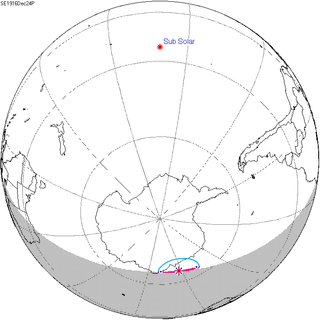 December 24, 1916 |
October 12, 1920 |  July 31, 1924 |
 May 19, 1928 |
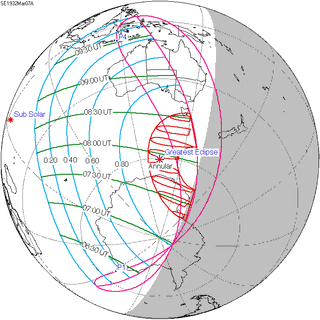 March 7, 1932 |
| 121 | 123 | 125 | 127 | 129 |
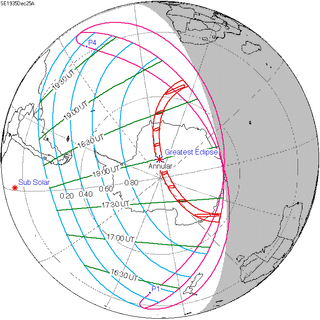 December 25, 1935 |
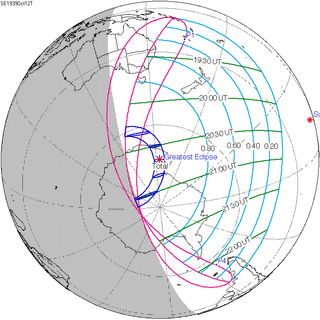 October 12, 1939 |
 August 1, 1943 |
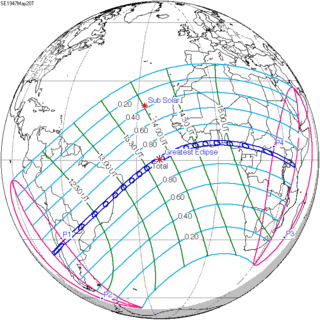 May 20, 1947 |
 March 7, 1951 |
| 131 | 133 | 135 | 137 | 139 |
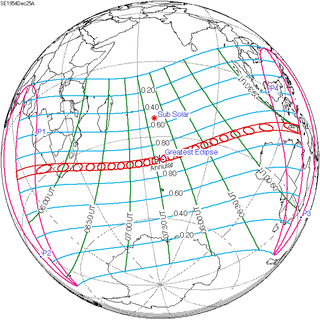 December 25, 1954 |
 October 12, 1958 |
 July 31, 1962 |
 May 20, 1966 |
 March 7, 1970 |
| 141 | 143 | 145 | 147 | 149 |
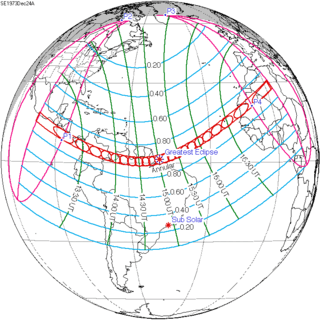 December 24, 1973 |
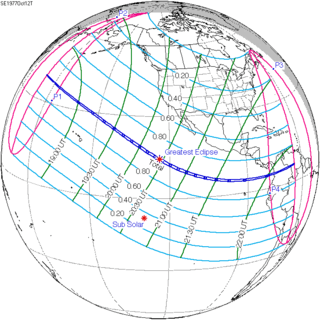 October 12, 1977 |
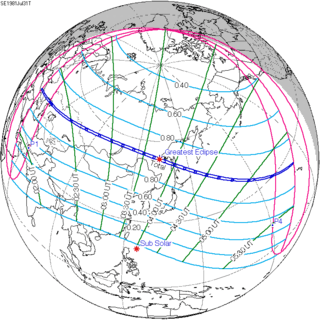 July 31, 1981 |
 May 19, 1985 |
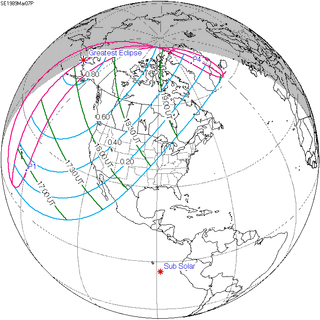 March 7, 1989 |
| 151 | 153 | 155 | 157 | 159 |
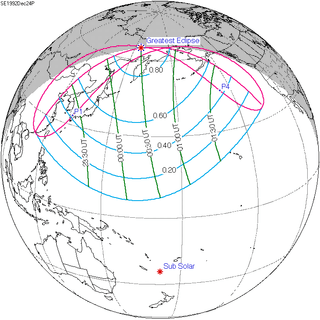 December 24, 1992 |
 October 12, 1996 |
 July 31, 2000 |
May 19, 2004 | March 7, 2008 |
| 161 | 163 | 165 | 167 | 169 |
| December 24, 2011 | October 13, 2015 | August 1, 2019 | May 19, 2023 | March 8, 2027 |
Notes
- van Gent, R.H. "Solar- and Lunar-Eclipse Predictions from Antiquity to the Present". A Catalogue of Eclipse Cycles. Utrecht University. Retrieved 6 October 2018.
- Saros Series Catalog of Solar Eclipses NASA Eclipse Web Site.
References
- Earth visibility chart and eclipse statistics Eclipse Predictions by Fred Espenak, NASA/GSFC
- Partial Solar Eclipse: July 30/31, 2000
- www.mreclipse.com Partial Solar Eclipse of 2000 July 30/31 by Fred Espenak (Spokane, WA)
- Video of partial solar eclipse in Nizhny Tagil, Russia
.jpg)
